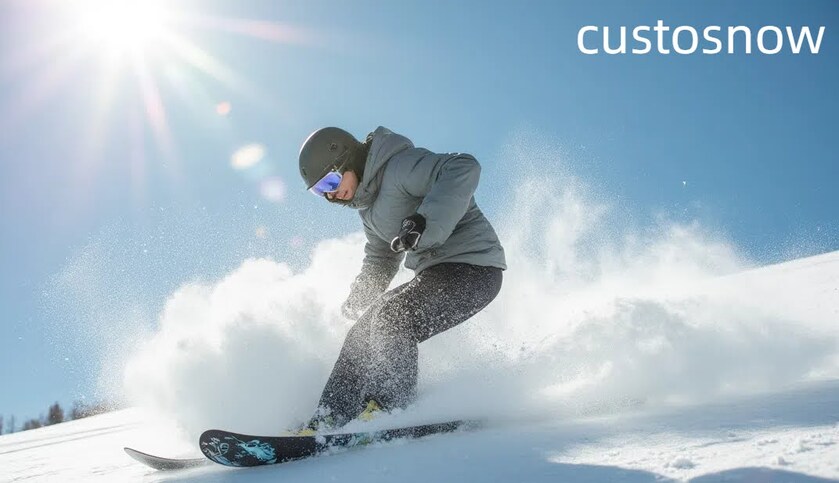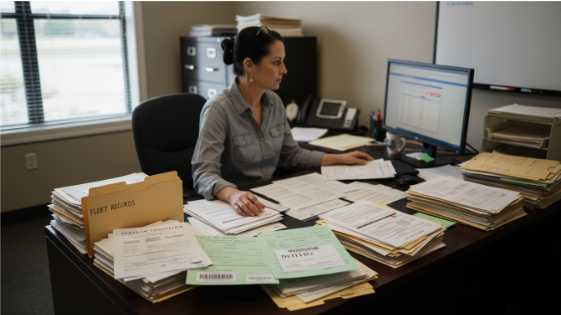The snowboarding industry has undergone a significant transformation in recent decades, particularly in how it addresses and serves female riders. What was once a male-dominated sport with equipment designed primarily for men has evolved into a more inclusive community with specialized gear engineered specifically for women. This evolution reflects broader societal changes and represents an important step toward gender equity in action sports. Among the companies leading this change, custosnow snowboards has established itself as a snowboard brand committed to addressing the unique needs of female snowboarders.
Evolution of Women-Specific Designs
The early days of women's snowboarding equipment were characterized by what industry insiders derisively call the "shrink it and pink it" approach. Manufacturers would simply scale down men's boards, add feminine graphics, and market them to women without meaningful consideration of anatomical differences or performance requirements.
"Those early women's boards were essentially just smaller versions of men's models," explains a veteran female product developer. "There was very little thought given to how women's bodies move differently or how their center of gravity affects riding dynamics."
This superficial approach began to change in the late 1990s and early 2000s as more women entered the sport and demanded equipment that genuinely addressed their needs. Forward-thinking brands recognized that women's snowboarding represented not just a moral imperative for inclusion but also a significant market opportunity.
The evolution toward truly women-specific designs involved extensive research into biomechanical differences and riding preferences. Manufacturers began to consider factors such as typically lighter body weight, different muscle distribution, and variations in stance width that affect how women interact with their equipment.
Today, women's snowboard design incorporates sophisticated adaptations that go far beyond size and aesthetics. These include adjusted flex patterns, modified sidecut geometries, and specialized core profiles that enhance performance for female riders across all ability levels and riding styles, from resort riding to backcountry adventures.
Key Female-Focused Manufacturers
While most major snowboard companies now offer women's lines, several brands have distinguished themselves through their commitment to female riders. These pioneering companies have invested significantly in research, development, and marketing specifically targeted at women's needs and preferences.
Female leadership within the snowboard industry has played a crucial role in this evolution. Companies with women in key decision-making positions—from product development to marketing and executive leadership—have often demonstrated a more authentic understanding of what female riders want and need from their equipment.
"Having women involved throughout the product creation process makes an enormous difference," notes the female founder of a successful women-focused brand. "It's not just about representation—it's about bringing lived experience to the design table."
Several success stories of women-owned snowboard company ventures have emerged in recent years, challenging the traditionally male-dominated industry structure. These brands often emphasize community building alongside product development, creating spaces where female riders can connect, progress, and influence the future direction of the sport.
Custosnow snowboards has positioned itself within this landscape by developing a comprehensive approach to women's equipment that balances performance with accessibility. Their women's line reflects extensive input from female team riders and ambassadors, ensuring that the products address real-world needs rather than assumptions about what women want, making them a great choice for female riders of all levels.
Technical Considerations in Women's Board Design
Creating high-performance women's snowboards involves numerous technical adaptations that address the biomechanical realities of female riders. One of the most significant considerations is flex pattern, with many women's boards featuring carefully calibrated medium flex options that provide an optimal balance of responsiveness and forgiveness.
"Flex is absolutely critical in women's board design," explains a product engineer specializing in women's equipment. "Women typically have a lower power-to-weight ratio than men of similar size, so the board needs to respond appropriately to their input without requiring excessive force."
Adaptations in traditional camber and reverse camber profiles for women's boards reflect these same principles. Women's-specific camber profiles often feature subtle modifications that enhance performance at lower rider weights while maintaining the characteristic benefits of each camber type. These adaptations ensure that female riders can access the stability and edge control of traditional camber or the float and forgiveness of reverse camber without needing to compensate for designs optimized for heavier riders.
Weight distribution and edge control optimizations represent another area where women's boards differ significantly from men's models. Because women typically carry their weight differently than men, with a lower center of gravity, board designs can be adjusted to enhance balance and control. These modifications might include altered sidecut depths, adjusted stance reference points, or specialized core profiling that works harmoniously with female biomechanics.
"It's about creating equipment that works with women's bodies rather than forcing women to adapt to equipment designed for different physiology," summarizes a female product tester who has evaluated hundreds of boards throughout her career.
Size and Fit Innovations
Perhaps the most visible aspect of women's snowboard development has been the expansion of appropriate range of sizes available to female riders. Historically, women were forced to choose between boards that were too large (men's small sizes) or too juvenile (children's models), neither of which provided optimal performance.
Today, leading manufacturers offer women's boards in comprehensive size ranges that accommodate riders of various heights, weights, and foot sizes. This expanded sizing recognizes the diversity within the female riding community and ensures that women can select equipment properly scaled to their individual dimensions.
Addressing the narrow waist width requirements of many female riders has been another important innovation. Women typically have smaller feet than men of comparable height, necessitating narrower board widths to allow for efficient edge transitions and reduced leverage requirements. Boards that are too wide for a rider's foot size create excessive leverage demands, leading to fatigue and reduced control.
"Having the right waist width is absolutely crucial," emphasizes a women's snowboard coach. "When a board is properly sized for a woman's foot, she can apply pressure more efficiently, reducing back leg burn and allowing for more precise control throughout the day."
The relationship between proper sizing and performance cannot be overstated. When riding equipment that fits correctly, female snowboarders experience reduced fatigue, increased control, and faster progression. This enhanced experience creates a positive feedback loop, encouraging continued participation and advancement within the sport.
Marketing Evolution
The marketing of women's snowboarding equipment has undergone a profound transformation that parallels the technical evolution of the products themselves. Early approaches often relied on stereotypical feminine imagery and messaging that emphasized appearance over performance, reinforcing the notion that women's participation in the sport was somehow less serious or committed than men's.
"The early marketing was painful to see," recalls a female marketing executive who entered the industry in the 1990s. "Pink graphics, fashion-focused messaging, and an implicit suggestion that women were primarily on the mountain to look good rather than to ride hard."
Contemporary approaches have largely moved away from these stereotypes toward performance-focused messaging that respects women's athletic abilities and ambitions. Modern campaigns typically showcase female riders demonstrating technical skills and tackling challenging natural terrain, emphasizing what the equipment enables rather than how it looks.
Social media strategies targeting female snowboarders have become increasingly sophisticated, creating authentic connections through content that resonates with women's actual experiences on the mountain. Many brands now work with diverse female ambassadors who represent various riding styles, body types, and backgrounds, providing more relatable role models for the growing community of women riders.
"Today's marketing acknowledges that women are on the mountain for the same reasons men are—because they love to ride," notes a social media manager for a leading women's snowboard brand. "The messaging focuses on performance, progression, and the joy of the sport rather than appearance or social approval."
Community Building and Representation
Beyond product development and marketing, significant progress has been made in creating supportive communities for female snowboarders. Women's snowboarding camps and events have proliferated, offering safe spaces for skill development and connection without the intimidation that some women experience in mixed-gender environments.
These gatherings serve multiple purposes: they provide targeted instruction that addresses women's specific learning patterns and challenges; they create networking opportunities that can lead to riding partnerships and mentorships; and they generate valuable feedback for manufacturers about what women experience with their equipment in real-world conditions.
Professional female riders, including many big mountain riders, have increasingly influenced product development through formal and informal relationships with manufacturers. As more women have achieved visibility in competition and media, their technical insights and performance requirements have shaped board designs that push the boundaries of what's possible for female riders.
"Having pro women involved in the development process elevates the entire category," explains a product line manager. "Their feedback is incredibly specific and performance-focused, which benefits not just elite riders but women at all levels who use the resulting technology."
Creating inclusive spaces in a traditionally male-dominated sport remains an ongoing challenge and opportunity. Progressive brands recognize that supporting women's participation requires more than just women-specific products—it demands a comprehensive approach that includes representation in media, support for female-focused events, and internal corporate cultures that value diverse perspectives.
Future Trends in Women's Snowboarding Equipment
Looking ahead, several emerging technologies show particular promise for benefiting female riders. Advanced computer modeling allows for increasingly precise tuning of flex patterns and torsional response, creating boards that respond optimally to typical female input forces. New composite materials offer improved strength-to-weight ratios, reducing overall board weight without sacrificing durability—a significant advantage for smaller riders.
The women's snowboarding market is predicted to continue its growth trajectory, with increasing diversification in product offerings. As more women enter the sport and progress to advanced levels, demand for specialized equipment for different riding styles and conditions will likely expand. This growth represents not just a business opportunity but a chance to further refine and improve the riding experience for women of all abilities.
Perhaps most significantly, women's preferences and requirements are increasingly influencing the broader industry beyond gender-specific products. Innovations developed for women's boards—such as more efficient edge technologies, weight-saving construction methods, and ergonomic binding designs—often prove beneficial for certain segments of male riders as well, particularly those with smaller frames or specific riding preferences.
"What we're seeing is that good design is good design," observes an industry analyst specializing in action sports equipment. "Many of the innovative products that emerged from women's-specific development are now recognized as advances that can benefit certain riders regardless of gender."
As the OEM snowboarding manufacturing industry continues to evolve, the integration of women's perspectives and requirements promises to drive innovation that enhances the riding experience for everyone on the entire mountain. By recognizing and addressing the specific needs of female riders, companies like custosnow snowboards are not only expanding their market reach but contributing to a more inclusive and diverse snowboarding culture that benefits the entire community.
The journey toward truly equitable representation in snowboarding is ongoing, but the progress made in women's equipment design represents a significant step forward. As technical innovations continue and cultural barriers diminish, the future of women's snowboarding looks increasingly bright—a future where equipment is no longer a limitation but a tool that empowers female riders to express themselves fully on the mountain, creating tons of fun and much fun experiences with their new board purchases from the best snowboard brands available.





















